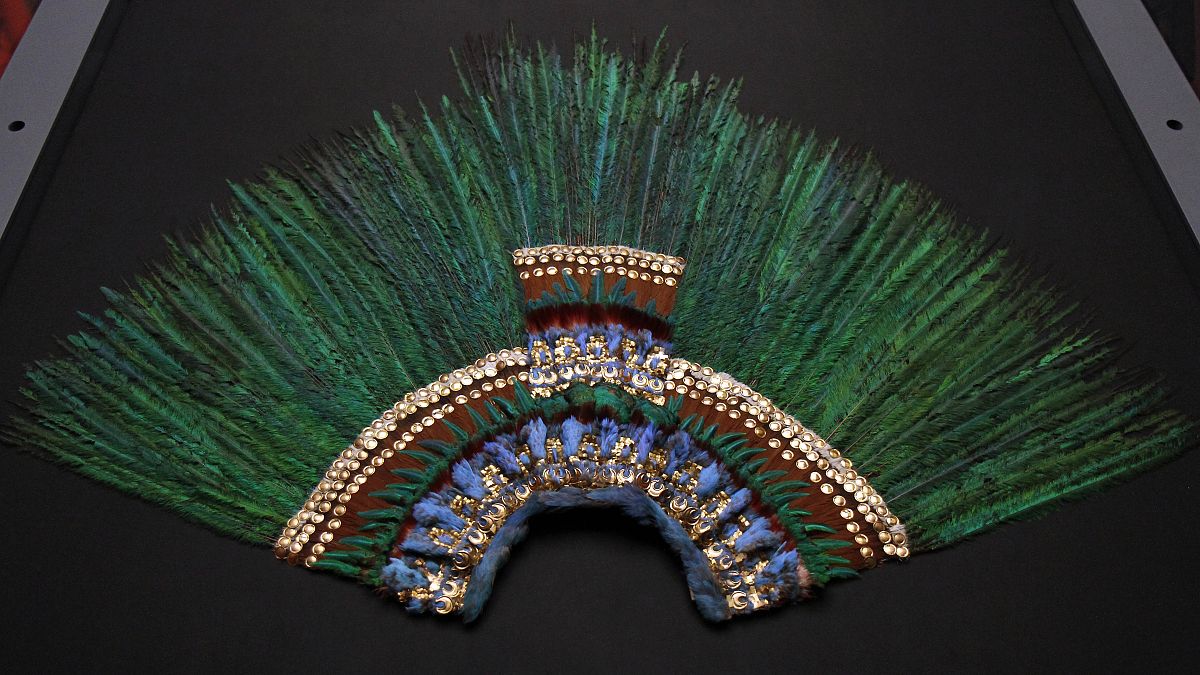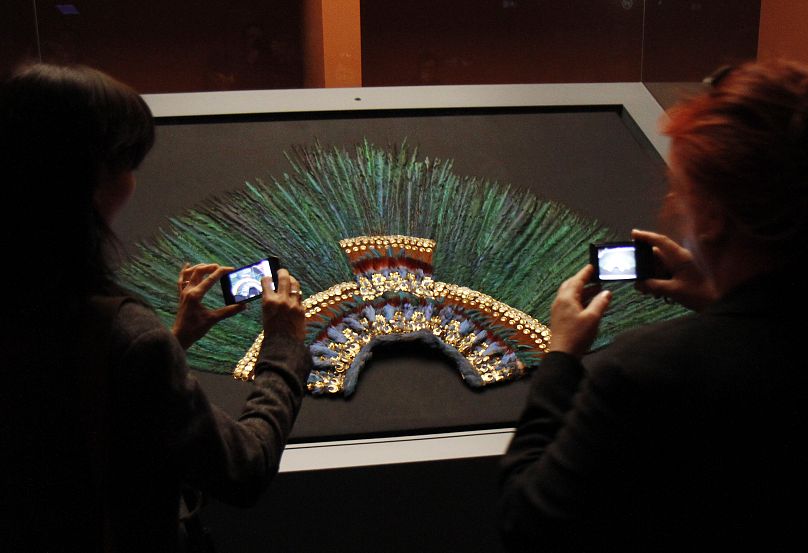Even Mexico's president admitted it was an impossible mission.
Mexico's president says he has sent his wife to Austria on an "impossible" mission to recover the headdress of a legendary Aztec king.
Andrés Manuel López Obrador said his wife — writer and university professor Beatriz Gutiérrez — was currently in Vienna, where the headdress of Aztec figure Moctezuma has been housed for decades.
"I told Beatriz to insist because it is a piece of ours from Mexico," López Obrador told a press conference on Tuesday as he claimed that "the Austrians have completely seized the headdress".
He added: "We are very persevering; we solve difficult things and we try the impossible."
The Mexican president, of the leftist National Regeneration Movement (MORENA), then recalled the failed plight of Maximiliano II, an Austrian who led the Second Mexican Empire and who also was unable to recover the artefact.
"They did not even want to lend it to Maximiliano of Austria, their countryman," he argued.
Claimed since 1991, Mexican authorities are now looking to repatriate the jewel of their heritage for 2021, in time for several significant milestones.
Next year marks the 700th anniversary of the founding of Tenochtitlán, the 500th anniversary of the Spanish colonisation of the Americas, and 200 years of Mexican independence.
Within the framework of a European tour, López Obrador has asked Italy to lend Mexico the Florentine and Cospi Codexes, while he has also requested the participation, next year, of Pope Francis.
As part of this participation, he would be involved in an act of "reconciliation" in which "apologies" would be given to Mexico's indigenous population for the abuses of the Spanish Conquest.
However, the trip is yet to be a success as Austrian authorities have so far turned down the request for the Aztec gear, saying: "It is too fragile."
Gerard van Bussel, the curator of the North and Central American collections at the Anthropological Museum of Vienna, maintains the piece would not be able to go to Mexico "at least in the next ten years".
He explained that even inside the gallery itself, they do not dare to lower it from the first floor, where it is exposed, for fear that it could suffer any damage.
The curator also highlighted the effort that has been invested in conditioning the installation that houses the headdress, and that "if there were an earthquake in Vienna, it would not move".
But thanks to a bilateral agreement between Austria and Mexico, all is not lost. Mexican citizens who present their passport at the entrance of the museum can still see the artefact for free.
A gift or a robbery from Hernán Cortés?
Consisting among a fan of thousands of emerald feathers, the headdress depicts the plume of a quetzal bird and is joined by hundreds of golden plates.
The plume of Moctezuma, therefore, also symbolises the power of Ancient Mexico.
Although its origin and how it arrived in Austria is unknown, many historians assume it was a gift from Moctezuma himself to the Spanish conqueror Hernán Cortés.
Cortés is believed to have later sent it to Emperor Carlos I, of the House of Habsburg.
History indicates that the headdress belonged to Moctezuma Xocoyotzin (1466-1520), the Aztec emperor who received Cortés in 1519.
According to several accounts, Moctezuma either gave the item to Cortés, or it was stolen, along with a baton, the coat of arms and a pennant.
Mexican archaeologist Carmen Gloria Cook (1906-1988) documented what happened to the headdress prior to arriving in Vienna.
It was kept in Brussels but by 1563 it was at Ambras Palace, in Innsbruck, Austria, under the ownership of Tirol's Count Ferdinand.
Upon his death, the collection was moved to several locations due to armed conflicts of the time, until it ended up in Vienna in 1817, where it remained in a cellar until 1878.
According to the archaeologist, a first repair corrected the moth-damaged feathers, the loosening of the back strings and the loss of most of the discs and other gold ornaments. These were replaced by gilt bronze discs.
In 2012, it was exhibited again after a restoration by Mexican and Austrian experts.
A faithful reproduction made in 1958 with authentic feathers put in place using a similar technique is exhibited at the Museum of Anthropology in Mexico City.

